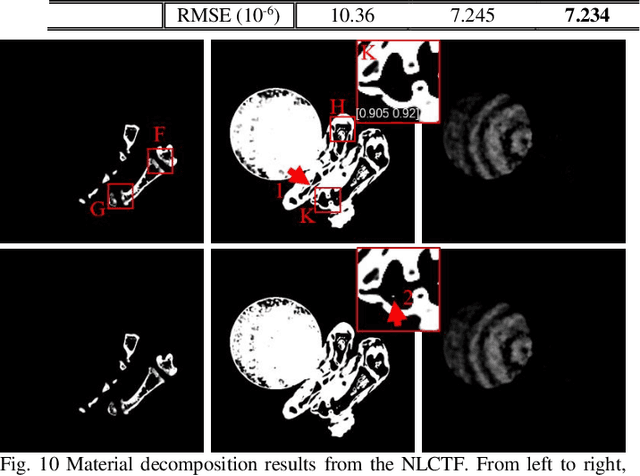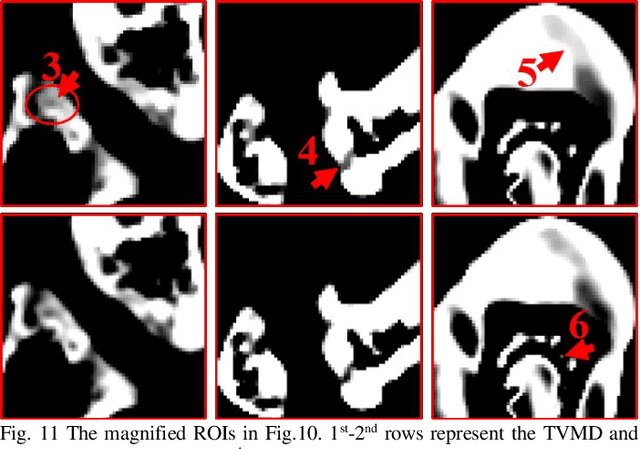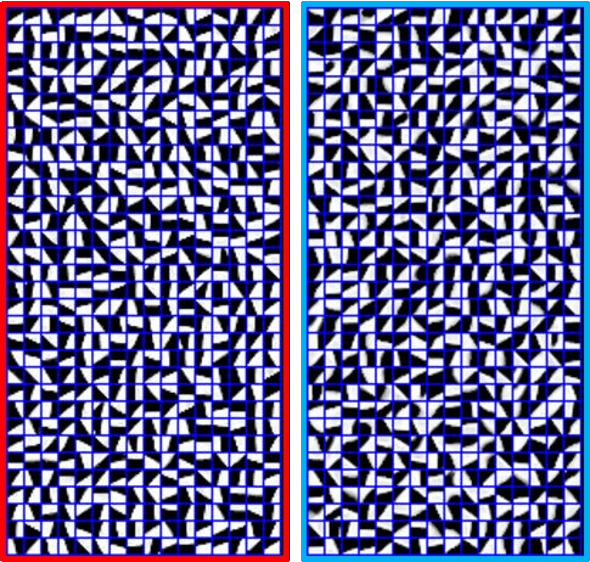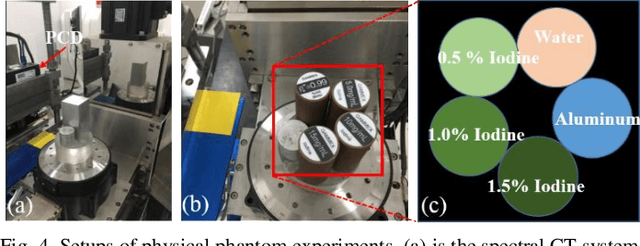Yining Zhu
Material decomposition for dual-energy propagation-based phase-contrast CT
Nov 30, 2023



Abstract:Material decomposition refers to using the energy dependence of material physical properties to differentiate materials in a sample, which is a very important application in computed tomography(CT). In propagation-based X-ray phase-contrast CT, the phase retrieval and Reconstruction are always independent. Moreover, like in conventional CT, the material decomposition methods in this technique can be classified into two types based on pre-reconstruction and post-reconstruction (two-step). The CT images often suffer from noise and artifacts in those methods because of no feedback and correction from the intensity data. This work investigates an iterative method to obtain material decomposition directly from the intensity data in different energies, which means that we perform phase retrieval, reconstruction and material decomposition in a one step. Fresnel diffraction is applied to forward propagation and CT images interact with this intensity data throughout the iterative process. Experiments results demonstrate that compared with two-step methods, the proposed method is superior in accurate material decomposition and noise reduction.
One-step Method for Material Quantitation using In-line Tomography with Single Scanning
Apr 17, 2022



Abstract:Objective: Quantitative technique based on In-line phase-contrast computed tomography with single scanning attracts more attention in application due to the flexibility of the implementation. However, the quantitative results usually suffer from artifacts and noise, since the phase retrieval and reconstruction are independent ("two-steps") without feedback from the original data. Our goal is to develop a method for material quantitative imaging based on a priori information specifically for the single-scanning data. Method: An iterative method that directly reconstructs the refractive index decrement delta and imaginary beta of the object from observed data ("one-step") within single object-to-detector distance (ODD) scanning. Simultaneously, high-quality quantitative reconstruction results are obtained by using a linear approximation that achieves material decomposition in the iterative process. Results: By comparing the equivalent atomic number of the material decomposition results in experiments, the accuracy of the proposed method is greater than 97.2%. Conclusion: The quantitative reconstruction and decomposition results are effectively improved, and there are feedback and corrections during the iteration, which effectively reduce the impact of noise and errors. Significance: This algorithm has the potential for quantitative imaging research, especially for imaging live samples and human breast preclinical studies.
DLIMD: Dictionary Learning based Image-domain Material Decomposition for spectral CT
May 24, 2019



Abstract:The potential huge advantage of spectral computed tomography (CT) is its capability to provide accuracy material identification and quantitative tissue information. This can benefit clinical applications, such as brain angiography, early tumor recognition, etc. To achieve more accurate material components with higher material image quality, we develop a dictionary learning based image-domain material decomposition (DLIMD) for spectral CT in this paper. First, we reconstruct spectral CT image from projections and calculate material coefficients matrix by selecting uniform regions of basis materials from image reconstruction results. Second, we employ the direct inversion (DI) method to obtain initial material decomposition results, and a set of image patches are extracted from the mode-1 unfolding of normalized material image tensor to train a united dictionary by the K-SVD technique. Third, the trained dictionary is employed to explore the similarities from decomposed material images by constructing the DLIMD model. Fourth, more constraints (i.e., volume conservation and the bounds of each pixel within material maps) are further integrated into the model to improve the accuracy of material decomposition. Finally, both physical phantom and preclinical experiments are employed to evaluate the performance of the proposed DLIMD in material decomposition accuracy, material image edge preservation and feature recovery.
Block Matching Frame based Material Reconstruction for Spectral CT
Oct 22, 2018



Abstract:Spectral computed tomography (CT) has a great potential in material identification and decomposition. To achieve high-quality material composition images and further suppress the x-ray beam hardening artifacts, we first propose a one-step material reconstruction model based on Taylor first-order expansion. Then, we develop a basic material reconstruction method named material simultaneous algebraic reconstruction technique (MSART). Considering the local similarity of each material image, we incorporate a powerful block matching frame (BMF) into the material reconstruction (MR) model and generate a BMF based MR (BMFMR) method. Because the BMFMR model contains the L0-norm problem, we adopt a split-Bregman method for optimization. The numerical simulation and physical phantom experiment results validate the correctness of the material reconstruction algorithms and demonstrate that the BMF regularization outperforms the total variation and no-local mean regularizations.
 Add to Chrome
Add to Chrome Add to Firefox
Add to Firefox Add to Edge
Add to Edge